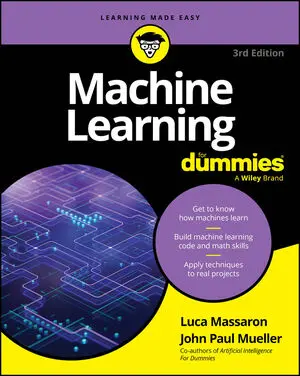Articles & Books From Information Technology
An easy-to-follow guide to demystifying Agentic AI, the next step in the evolution of artificial intelligence Agentic AI is the next big leap in artificial intelligence. Agentic systems don't just respond to commands. They set goals, make decisions, and take initiative without direct human interaction. Sound like a lot to wrap your head around?
Make smarter business decisions with Microsoft PowerBI. Microsoft PowerBI For Dummies gives you the foundation you need to use this powerful software platform to manage your data and gather insight for making better decisions. With PowerBI, you can visualize, model, and interpret large datasets, quickly revealing insights that once took weeks to dig out.
The most human-friendly book on machine learning Somewhere buried in all the systems that drive artificial intelligence, you'll find machine learning—the process that allows technology to build knowledge based on data and patterns. Machine Learning For Dummies is an excellent starting point for anyone who wants deeper insight into how all this learning actually happens.
Article / Updated 11-19-2025
In this article, you will learn: Common risks in legacy data center infrastructure Why traditional networks create security and compliance challenges How to modernize your network for hybrid multicloud Practical tips to modernize your data center When infrastructure design limits business agility Businesses often discover network limitations only when deploying new applications.
Article / Updated 11-19-2025
Many businesses (maybe even yours) overlook the limitations of a legacy data center facility, built to address the requirements of a different time and now facing a long list of complex and costly upgrades. Such infrastructure can’t keep up with the constantly evolving demands of ever-higher computing workloads including artificial intelligence (AI) and hybrid multicloud architectures.
Article / Updated 10-10-2025
In this article you will learn:What OpenTelemetry-native means — and why it mattersHow OpenTelemetry solves the chaos of fragmented telemetryHow to get started with OpenTelemetry-native toolsThe benefits of adopting OpenTelemetry-native observabilityModern software systems are more complex than ever. A single customer request might pass through a dozen microservices, multiple databases, third-party application programming interfaces (APIs), and serverless functions — all deployed across hybrid or multi-cloud environments.
Article / Updated 10-10-2025
In this article you will learn:What the digital workplace isWhy the digital workplace mattersSteps to digital workplace success and benefitsGone are the days of workers filing into the office each morning, completing eight hours of work at their desks, then heading home for the evening. Today’s workforce is flexible, from the locations where the work occurs to the hours when people are completing that work.
Cheat Sheet / Updated 06-09-2025
Although artificial intelligence (AI) has been around in some form since the 1950s, it was the first public release of ChatGPT and OpenAI’s foundational large language models (LLMs) like GPT 3.5 that made generative AI (GenAI) applications available to people who aren’t data scientists and computer geniuses.OpenAI’s models and models from companies such as Google, Facebook, Anthropic, and others ignited the world’s demand for increasingly sophisticated GenAI models and tools, and the market was quick to deliver.
A comprehensive roadmap to using AI in your career and in your life Artificial intelligence is everywhere. Major software organizations like Microsoft, Google, and Apple have built AI directly into products and invited the world to become part of the AI revolution. And it's impossible to use these tools to their fullest potential without understanding the basics of what AI is and what it can do.
Video / Updated 05-31-2025
When you’re new to crafting AI prompts, you can easily make mistakes. Using AI tools the right way makes you more productive and efficient. But if you aren’t careful, you may develop bad habits when you’re still learning. We clue you in to 10 mistakes you should avoid from the start in this video and article. Not Spending Enough Time Crafting and Testing PromptsOne common mistake when using AI tools is not putting in the effort to carefully craft your prompts.






